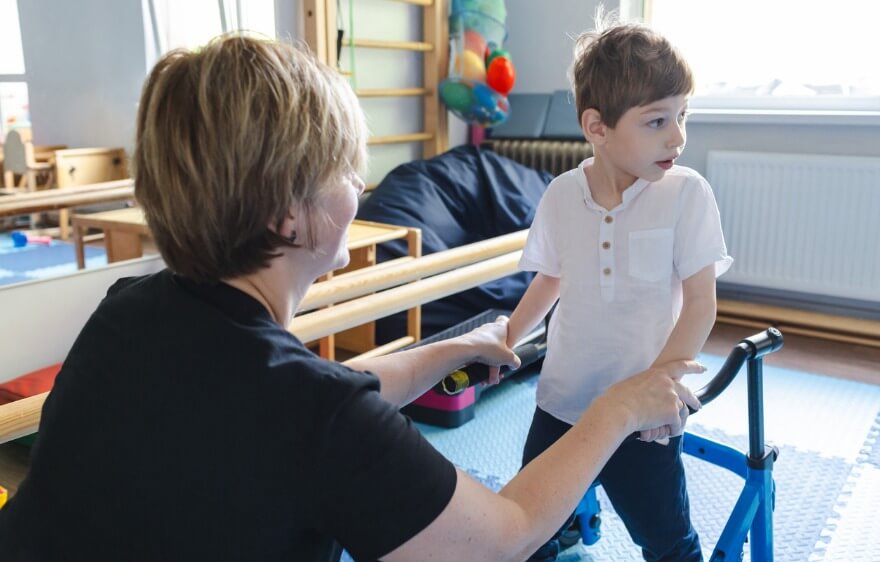If you’re betting big on technology in this revolution, it’s the wrong bet.
Privately held companies keep their thinking and strategy close to the vest. Our goals, strategies and metrics are the secret sauce of our businesses. If we share these things out loud we risk someone else crossing our own finish line. But sometimes industry advancements happen so fast, a little truth-telling would benefit us all. I’m the owner/CEO of a tech-enabled service company in the realm of healthcare. It’s a sweet, successful spot in 2020. Admittedly, in 2004, I didn’t start the company with the goal to stand at the historic crossroads of an industry, technology, and service. But 16 years later I was smart and lucky enough to make my way here. From the beginning, my role has involved planning 3-5 years ahead to ensure the relevancy and profitability of the business. However, the business pivot to “tech-enabled” healthcare didn’t arrive following years of such thoughtful planning. Like many businesses in 2008, our future arrived dressed as disaster.

NOW
Our demographic footprint in 2020 is 90 employees in the areas of speech-language pathology (SLPs), occupational therapy (OTs) and school psychology services in six states. We provide these therapy services in the schools, in our own Portland, Oregon clinic, and online direct to the consumer. From the outside, our consistent year after year growth to last year’s $6.2M annual revenue may seem like a natural progression since 2008. But it wasn’t. A decade ago, I was still trying to describe the concept of “online speech therapy” to every stakeholder connected to us [consumer, payer, client, etc]. Today, 80% of our business is now telehealth related. I know first-hand what is involved in building a successful telehealth company in the area of speech and occupational therapy. I also know where I made the wrong bet. More importantly, I now know exactly what the future will look like and what success will require. After such lessons learned and insights gained, I decided to write and share with other parties potentially standing at the same crossroads.
THEN
Despite today’s prolific business discussions about telehealth ensuring quality healthcare and subspecialties to more rural environments desperate for such services, in 2008, my business had plenty of work in our local area. Far away more rural environments were not a strategic objective.
Then the crash of 2008 materialized and our local jobs disappeared overnight when many stay-at-home parents and part-time professionals had to step up and become their family’s source of income, simultaneously, filling all of my then contract workers’ assignments.
Jobs still existed, but they were geographically far away and I knew I would never convince my in-demand specialists to relocate to rural parts of Oregon or Washington for the benefit of my business. Besides, even if they would, I knew it would not be a sustainable model. Competitors utilize this model and spend a fortune to keep it cycling. Concurrently, some companies were beginning to roll out the idea of services to schools entirely by video-conference but school leaders had been so vocal with us about why they hated that model I knew I didn’t want to follow that exact plan either.
And so, while staring at the ceiling at 3 am, I created our own tech-enabled service model. Specialists would work 75% of the time from their home office, online, directly with clients. Several days to a week once a month, specialists traveled and worked on-site in their assigned school district. I spent all my personal emotional capital that first year convincing my staff it was worth trying something new. ‘Hey! Flexibility! Stay in a hotel a few nights a month! AKA You’re not in charge at home a few nights a month!’ Their trust in me, sense of adventure, and the possibility of a more flexible work life helped them take that first step (what could have been perceived as) over a potential cliff. New clients struggled to conceptualize this model but faced with long-term vacancies and loathing the option of video-conferencing only, many took a chance on our promised way of doing things.
By the third year of our tech-enabled service model, we paid nothing to recruit new specialists. It seemed everyone wanted to work differently with a company they trusted. The phone was ringing off the hook. By the sixth year of our success with our Hello There! model, I announced there would be no going back and to look forward meant looking at technology platforms with more bells and whistles. I knew it wasn’t enough to implement therapy online, I wanted to capture it for parents to independently access later from their own HIPAA compliant account. Fundamentally, there was much to dislike about what cost-effective tech platform options existed at the time. What I really wanted for my clients, simply didn’t exist. So, in a move to create an ideal option (and also seeking to diversify my company’s base of assets), I decided we’d build our own.
MY MISTAKES
We were never a venture capital-funded start-up. I have no other partners and have been successful financially paying as I went for whatever we needed in the past so I decided, this too, I would fund from company profit.
I spent $50,000 on a simple app that didn’t accomplish what I set out to accomplish. With new developers and reorganized plans, I decided to bet big and spent $200,000 to develop the big picture platform and back end account structure with the exact features I wanted, ready to roll-out to the public. Because I knew, for all the work I do staffing school districts, our own clinic, and mentoring new professionals the future will belong to the company mastering the direct to consumer online (speech therapy) market.
Side note-Why do I believe this? Within our fields, only a relative handful of specialists provide these services now directly to the consumer. And then, mostly to pediatric populations. Despite the profit-margin being higher direct to the consumer, those who view themselves as my competitors are hyper-focused on larger contracts only with schools or health facilities. Lay on the challenge that consumers don’t automatically pivot to online options for their health care when in need and I get why the direct to consumer market has been viewed as not yet mature and challenging.
But that is changing. Rapidly.
Had a stroke and want to continue working on your speech from the convenience of your home?
Had a car accident but need to work on thinking skills before returning to work or school?
Want to avoid traffic and one more drop-off/pick-up responsibility and let Jr do speech therapy from the couch?
Yes. Yes. and Yes! The writing is already on the wall. Due to convenience, telehealth will become the public’s first choice for receiving services. I thought our time had arrived so I didn’t hesitate investing my money.
Flash forward, the platform turned out beautifully. So I thought we’d turn on a switch and be heading off into the future I had visualized for so long. But I made 2 significant mistakes.
-
- Due to the account features, I didn’t fully appreciate the level of ongoing tech support that would be required by staff and consumers alike on our way to profitability – Which is an expensive and daunting endeavor. We’re not a tech company after all, we’re tech-enabled . . . And,
- Public demand didn’t escalate as fast as I anticipated. Which also translated into more expense as I faced the need to market online speech therapy directly to consumers on a wide scale.
Sure, there are always the early adopters. Individuals who found us online and got in touch desperately wanting to become a client despite living in Kansas, New York, or Florida. But insurance adoption of online therapy lagged just enough to create one more hurdle for the early adopter.
Fortunately, I strive to run this company with more brain and less ego. So after months of work and hundreds of thousands spent, I turned the switch off and put our platform ambitions on hold opting to not invest further profits.
MY SUCCESS
Sometimes you really should listen to your mother and put your phone down. Because when you put your technology to the side, an industry can become even more clear. My pause in developing tech made me fully appreciate that the future Entrepreneurial Queens in telehealth were not going to be radically successful due to the software they used. More platforms are emerging all the time. Some of them have different features. Others with different objectives. But in the world of telehealth, software and hardware will bend to market forces and gobble each other until the best or most efficient options remain standing.
That’s capitalism.
MY AH-HA
But ironically, despite this new potential for capacity, our healthcare problems will not be over. Being able to reach anyone/anywhere doesn’t solve the initial challenge of simply not having enough specialists to go around. It’s one thing to put a doctor on a telehealth platform to assess if a patient needs antibiotics. Virtual appointments allow doctors to bounce between those patients effortlessly and do it more often each hour.
But rehabilitative therapy doesn’t work that way. Our clients may be able to access our services if we’re online more easily, but the time we spend with clients remains the same. Which means we can still only see so many clients in a day. Which means the staggering shortage we are experiencing right now is still going to be a concern in the future.
MY PREDICTIONS/MY FUTURE SUCCESS
The future of telehealth is not technology alone.
The future wealth of this industry is not related to the software with the most bells and whistles. The future of telehealth belongs to the company who masters building a culture reflecting 1) easy recruitment “I want to work with THEM” and 2) individual professional support.
Staff want to be successful, even if they’re exploring new ways of doing business or new ways of doing healthcare. Our massive social transition of accepting, even wanting, telehealth as consumers does not necessarily equate to healthcare providers knowing how to practice their specialities online. Or doing it well. The future of telehealth is healthcare professionals. And companies that know how to treat, train, and support these specialists.
Privately held companies do tend to keep their thinking and strategy close to the vest but in our case, I’m so confident we’re getting it right, I wanted to share with everyone/anyone also standing at these historic crossroads.
What do you pay to recruit specialists? I pay almost nothing.
How do you ensure quality service (i.e., the reputation of your company? Word of mouth demand)? I’m investing in teaching professionals how work can look different and how it should be practiced online. Consumers recognize when working with someone skilled and passionate.
What is your rate of turnover? Our staff don’t leave us to join our competitors. And people continue to reach out to us to ask if we’re hiring or how they can be a part of our vision of the future. Because yeah, it’s a pretty awesome looking future.
I can’t imagine owning my company indefinitely. And when the time comes to exit and I’m sharing our numbers, history and statistics I’ll be clear we are thriving because in a tech-enabled world, we get the people piece.So much so, I invest our resources to care for and teach our healthcare professionals what can and will be in the world of telehealth.
Technology alone is a solid 2 or 3-of-a-kind bet. And it gets a lot of flashy attention. But I’m holding the royal flush of actually knowing how to get the job done.
Good Business to Each of You,

Sharon Soliday, CEO/Founder/Advocate for Kids
Email Me






